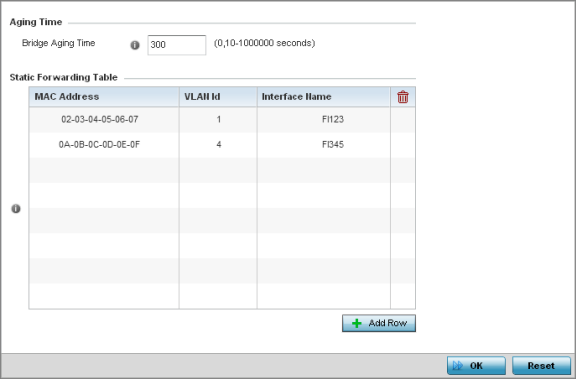Forwarding Database Configuration
About this task
An Forwarding Database forwards or filter packets on behalf of the managing controller, service platform or access point. The bridge reads the packet's destination MAC address and decides to either forward the packet or drop (filter) it. If it's determined the destination MAC is on a different network segment, it forwards the packet to the segment. If the destination MAC is on the same network segment, the packet is dropped (filtered). As nodes transmit packets through the bridge, the bridge updates its forwarding database with known MAC addresses and their locations on the network. This information is then used to decide to filter or forward the packet.
To define a forwarding database configuration:




